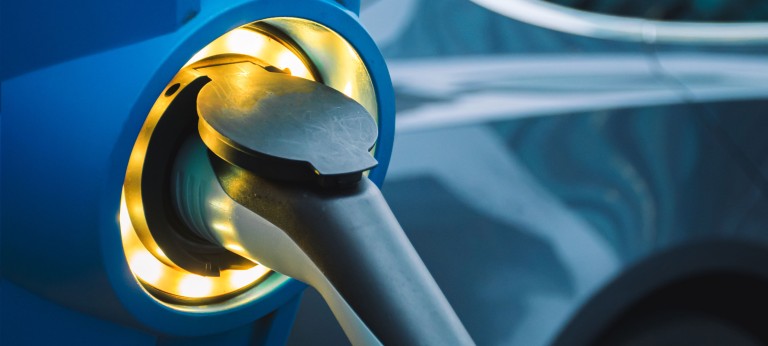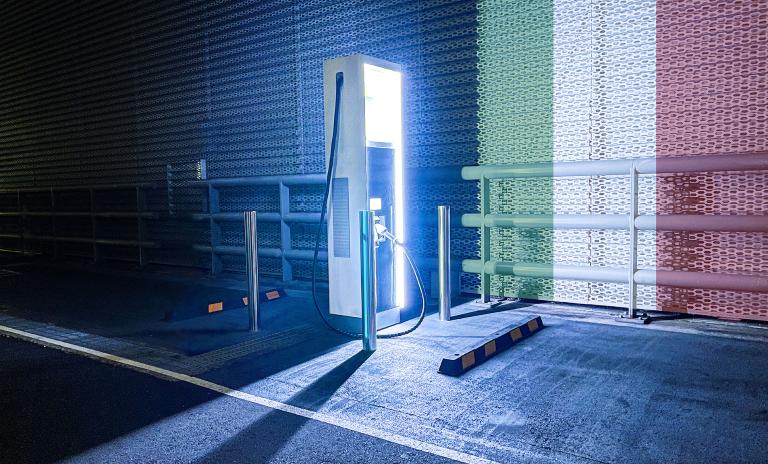EV Charging Index: Expert insight from Italy
![{[downloads[language].preview]}](https://www.rolandberger.com/publications/publication_image/23_2077_art_ev_charging_index_deep_dive_italy_cover_download_preview.jpg)
After a slow start, e-mobility is now growing fast in Italy with plenty of further potential. Discover more in Roland Berger’s EV Charging Index 2023.


Italy has been slow to adopt EVs, but sales are now beginning to rise quickly. Its public charging infrastructure is just below average, with fast chargers particularly lacking. Government incentives and regulations look set to change this, opening up exciting new opportunities for charge-point-operators.
EV sales penetration suffered slightly in 2022 due to uncertainties over incentives. At 9%, the rate is some way below the global average of 16% but set to increase in 2023 with incentives now clearer. Italy is a highly attractive market, given the magnitude of the total market (fourth largest in EU, in terms of total vehicle sales). In its base scenario, the government has set a target of 6 million EVs by 2030.
In terms of public charging infrastructure, Italy’s vehicle-to-point ratio of 17.9 is just behind the global average of 15.9. However, its growth rate of 23% is better than the global average (21%). Destination charging is growing more rapidly than on-street charge points. The ratio of charge-points per kilometer remains low, though, particularly in southern regions. And just 12% of Italy’s public charge points are DC chargers – almost half the global average of 22%. It’s no surprise that general satisfaction with the current charging experience is below the global average (71% vs. 82%). Overall, public charging infrastructure is moving to high-power charge points of 90kW and upwards, which allows for a wide territorial coverage even with a low diffusion of charge points.
In recent months, the government has taken steps to grow charging infrastructure in highway service stations as well as urban and suburban areas. The Transportation Regulatory Authority for the first time has implemented regulations (Resolution 130 of August 2022) for highway concessionaires when selecting charge-point operators (CPOs). Autostrade per l'Italia, which operates around half of Italy’s 400 service stations, will complete by the end of 2023 the installation of CPs on 100 service areas through its company Free To X and will start tenders to select CPOs in the remaining service areas in late 2023 or early 2024.
Meanwhile, the government has allocated approximately EUR 700 million to finance the installation of more than 21,000 fast and superfast charge points in urban and suburban areas by 2025. Interestingly, tenders for this are actively encouraging the conversion of gas service stations into EV charging stations.
At the moment, two main companies dominate – Enel X Way and Becharge. New players are beginning to enter the market, though. Regardless of their size, all market players have ambitious plans to invest and grow over the next three years. Some have even agreed strategic partnerships to expand network coverage across attractive locations while limiting investment and sharing risk.
Italy is still a relatively immature market for a large European country. There is plenty of scope for CPOs to agree partnerships with e.g. retail chains to claim high-potential locations. The upcoming calls for tender mentioned above also represent significant opportunities.
![{[downloads[language].preview]}](https://www.rolandberger.com/publications/publication_image/23_2077_art_ev_charging_index_deep_dive_italy_cover_download_preview.jpg)
After a slow start, e-mobility is now growing fast in Italy with plenty of further potential. Discover more in Roland Berger’s EV Charging Index 2023.
Sign up for our newsletter and get regular updates on Automotive topics.
